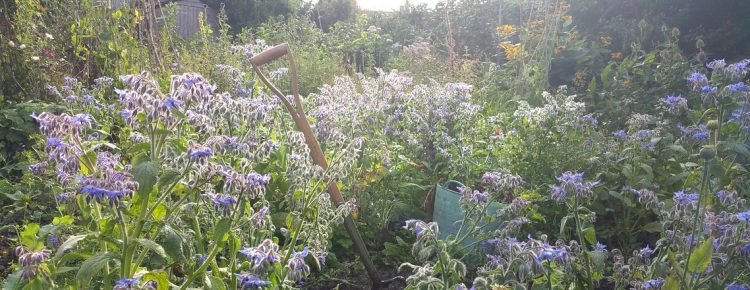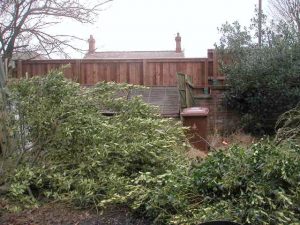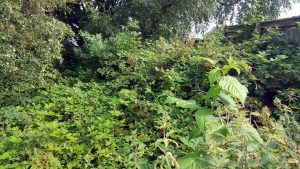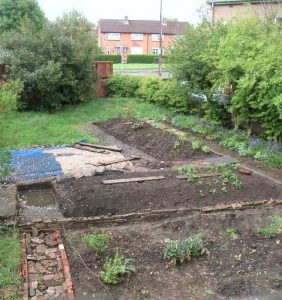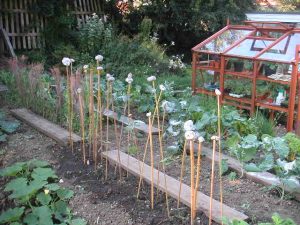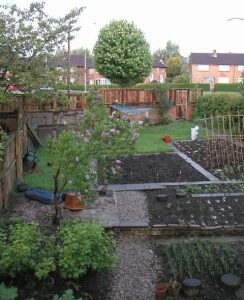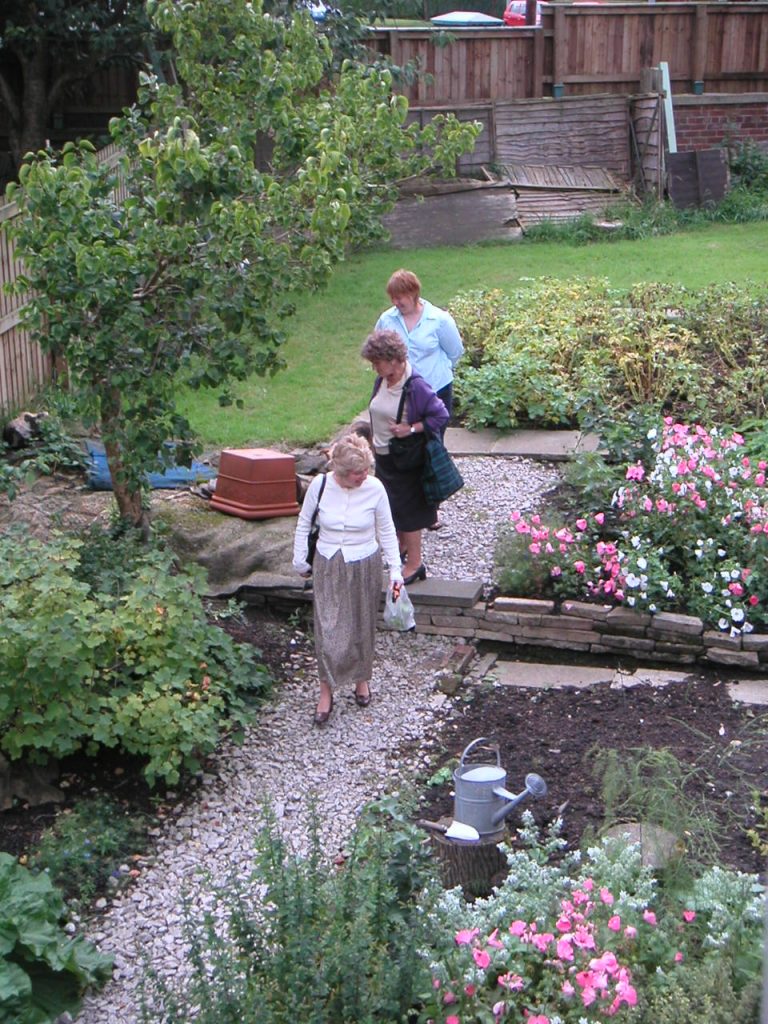Click here for part 1
The reason why the garden had such a problem with trespassing is because it was a natural shortcut between Bank Lane and Fecitt Brow. All someone had to do was jump over a low wall and walk across the lawn or behind the garage to save the long trek around the church hall and car park.
After several security scares and when it was obvious that nothing else could be done, Rev’d Anne and her husband, David, installed a long wooden fence along the Fecitt Brow side of the garden to the church hall. They also removed the old concrete fence adjacent the hall so the garden could become the hall garden as much as a vicarage garden. At a stroke, this solved the security problem and the task of creating a wildlife garden was now possible.
There are degrees of wildlife friendly gardens. The best replace lawns with areas of long grass and flowers which support nature better. However, the Bank Lane and Church Hall sides of the Vicarage garden needed lawns for the hall. As in other aspects of life, we have to compromise on one thing in the interests of another.
The long Fecitt Brow side was instead put aside for a large wilderness area combined with an allotment garden where nature would have the highest priority. This area already had most of the trees and lots of brambles which were are allowed to take over providing a habitat for insects, birds and bees.
Anne also avoided weedkillers and other chemicals which has meant the initial low level of insect wildlife has slowly built up over the years and is now quite abundant. The soil was cleared of couch grass, docks, buttercups etc. using old carpets laid on the ground for six months or longer. This tip, which starves the plants of light, came from a book on organic gardening by Bob Flowerdew and is the only way to completely clear invasive weeds. It saved weeks if not months of hard work.
Creating the allotment garden was the first big project. David installed a gate in the wall on Fecitt Brow so people could come and go and manure and plants could be brought in. There was already a path and border on the right hand side, which ran up from the house. It had a border with bluebells and an old hawthorn hedge which Anne complemented with ferns and a wide variety of perennials and annuals. The next step was to put in a path on the left side and lay out planting areas in between.
David then made an unexpected discovery. When digging over the sloping ground, he found that it had once been terraced with low dry-stone walls which had slumped and been covered over with soil. He therefore excavated and restored the walls, arranging the new beds to match. He also recycled the large concrete planks from the old fencing adjacent the church hall as these made great paths around the beds.
A big compost box at the end of the garden was set up to take the usual cuttings and weeds, as well as horse manure from one of the stables in the village and pigeon manure from a neighbour.
The soil of the allotment garden was poor and needed a long slow process of being fertilised naturally. Anne first noticed an improvement when nettles started to grow. These need good soils and although they are a weed and sting you, they have great nature value for butterflies. They now grow everywhere and are weeded back to the corners and edges of the garden.
Finally, David, helped by Alan Barton, added a greenhouse at the bottom of the garden. It would have been better at the top but there was a problem of stone throwing from the street at that time so that was too risky.
Anne planted fruit bushes, peas, beans, root vegetables, rhubarb etc. along with a flower cutting bed. This has helped supply the church with flowers while bunches of flowers and fruit are used as gifts when Anne visits parishioners.
The pictures show the allotment garden in its early days when it was neat and tidy. It is now kept in a wilder state as you can see in the borage photo at the top of the page. Anne has since learnt more about encouraging nature from programmes like Springwatch and Gardeners World.
Many people have helped out at the allotment garden and have shared in its produce. It has become a secluded place for gardening and quiet reflection. Over spring, summer and autumn, it is full of pollinating insects including the occasional dragonfly coming from Knuzden Brook. If you like gardening, it is a good place to be.

